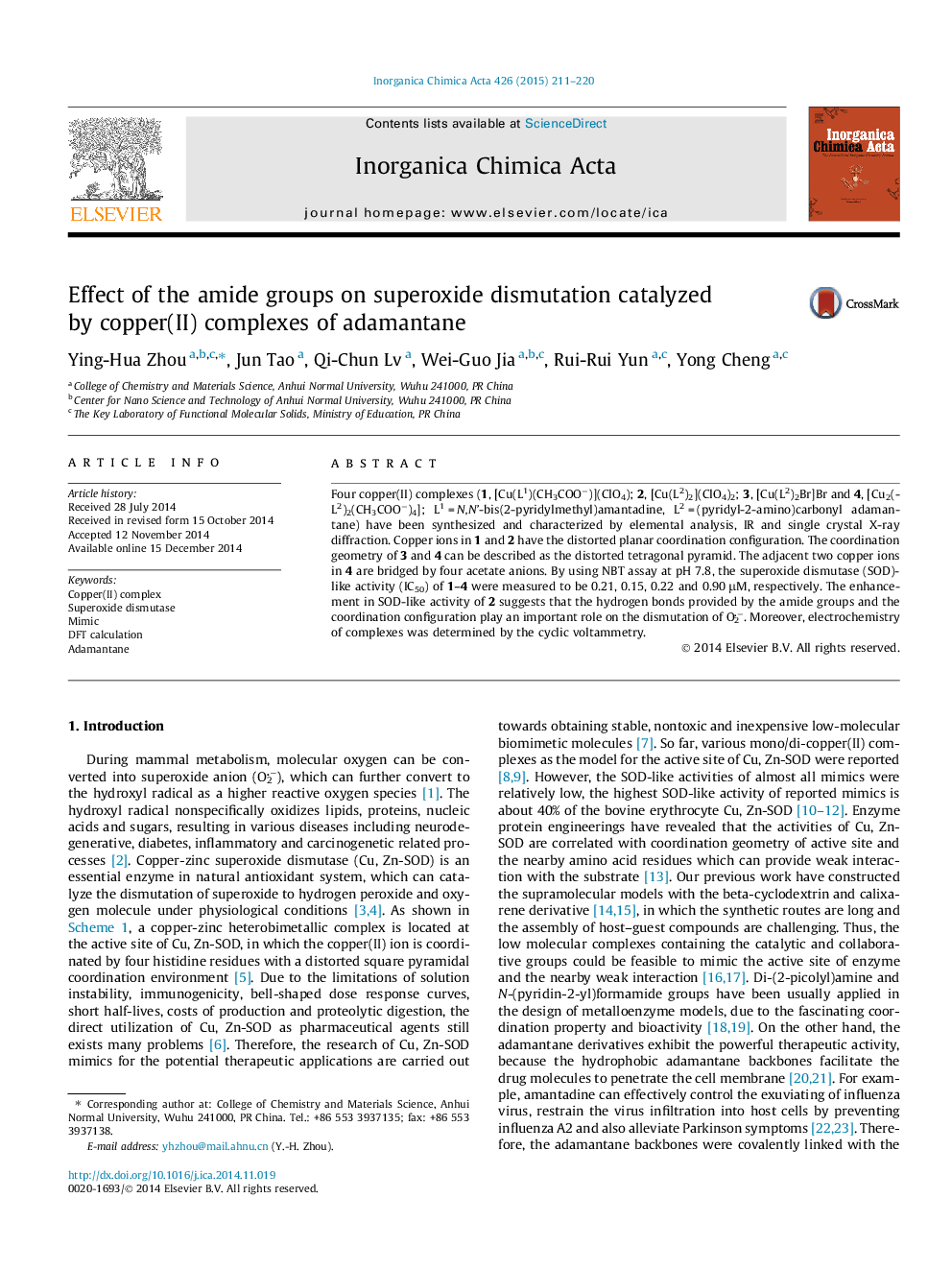| Article ID | Journal | Published Year | Pages | File Type |
|---|---|---|---|---|
| 1306748 | Inorganica Chimica Acta | 2015 | 10 Pages |
•The crystal structures of copper(II) complex were regulated by the anions from copper salts.•Four copper(II) complexes containing adamantane groups have been constructed to mimic Cu, Zn-SOD.•Acetate anions behave two coordination modes in the copper(II) complexes.•The copper(II) complex with the amide groups showed high SOD-like activity.•The relationship between the coordination structure and SOD-like activity have been explored.
Four copper(II) complexes (1, [Cu(L1)(CH3COO−)](ClO4); 2, [Cu(L2)2](ClO4)2; 3, [Cu(L2)2Br]Br and 4, [Cu2(L2)2(CH3COO−)4]; L1 = N,N’-bis(2-pyridylmethyl)amantadine, L2 = (pyridyl-2-amino)carbonyl adamantane) have been synthesized and characterized by elemental analysis, IR and single crystal X-ray diffraction. Copper ions in 1 and 2 have the distorted planar coordination configuration. The coordination geometry of 3 and 4 can be described as the distorted tetragonal pyramid. The adjacent two copper ions in 4 are bridged by four acetate anions. By using NBT assay at pH 7.8, the superoxide dismutase (SOD)-like activity (IC50) of 1–4 were measured to be 0.21, 0.15, 0.22 and 0.90 μM, respectively. The enhancement in SOD-like activity of 2 suggests that the hydrogen bonds provided by the amide groups and the coordination configuration play an important role on the dismutation of O2−. Moreover, electrochemistry of complexes was determined by the cyclic voltammetry.
Graphical abstractFour copper(II) complexes based on the adamantane derivatives were synthesized and fully characterized at the solid and solution state. The crystal structural analysis indicate that the variation of coordination mode may be due to the counter anions (ClO4−, CH3COO− and Br−) and the ligand types. The quasi-reversible Cu(II)/Cu(I) redox waves of 1–4 were determined by the cyclic voltammetry method. Complex 2 exhibits the relatively higher SOD-like activity, which can be attributed to the favorable coordination configuration and the hydrogen bonds provided by the amide groups.Figure optionsDownload full-size imageDownload as PowerPoint slide
